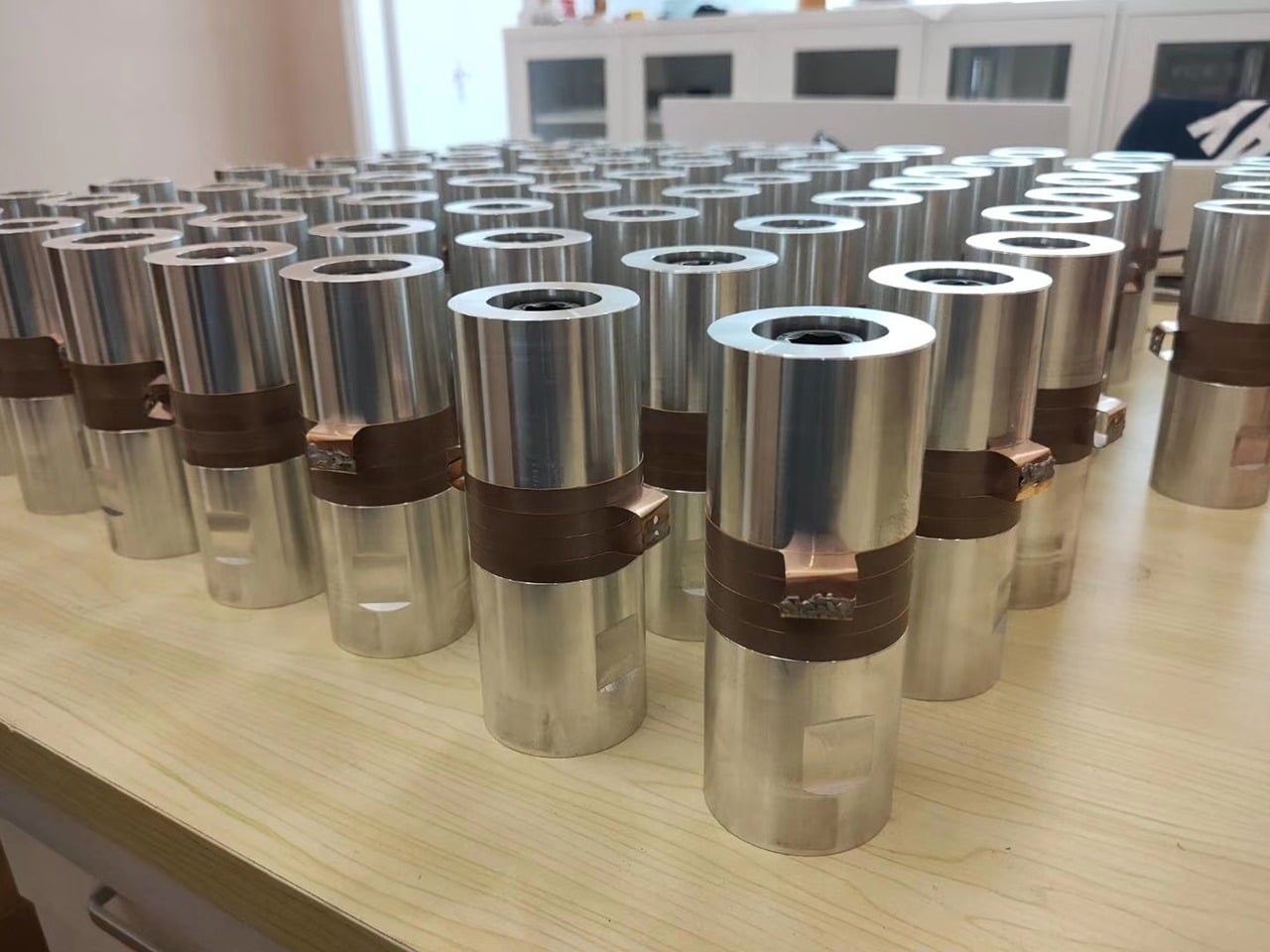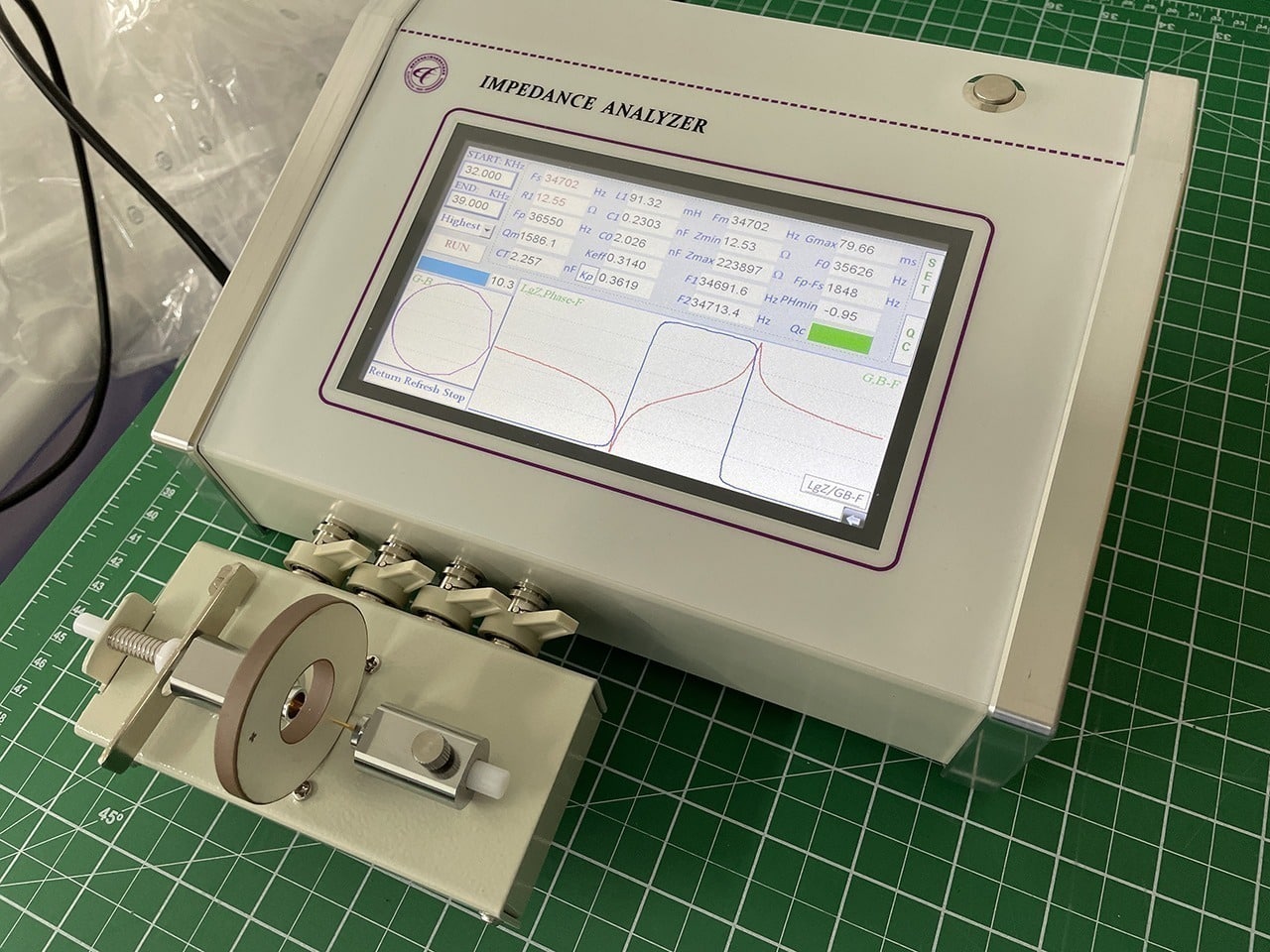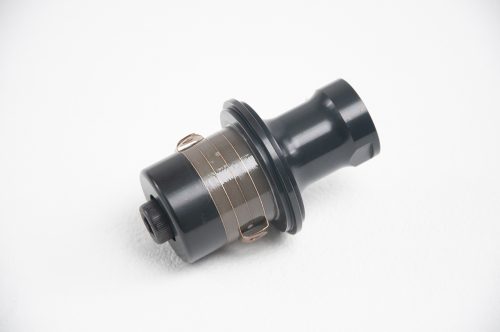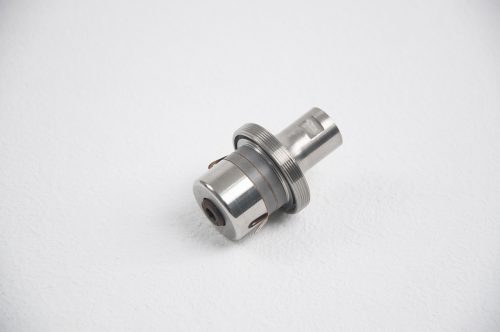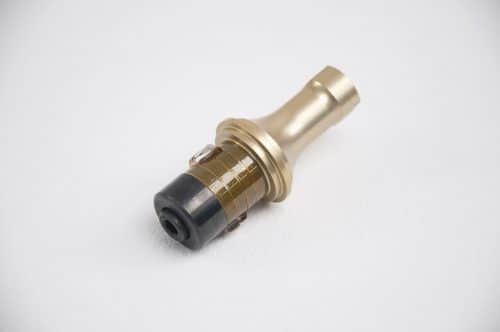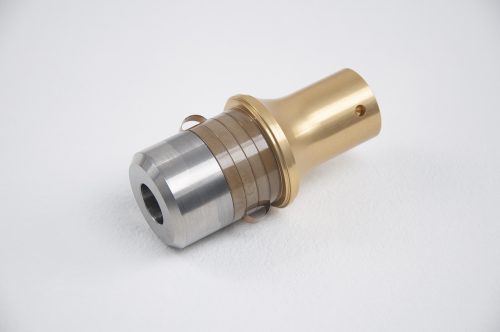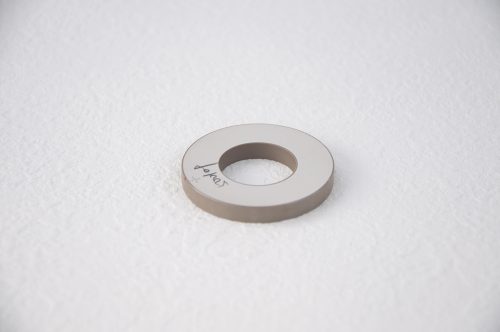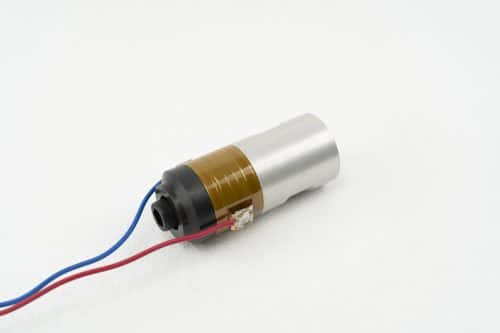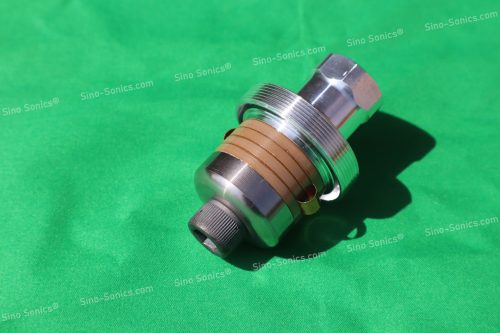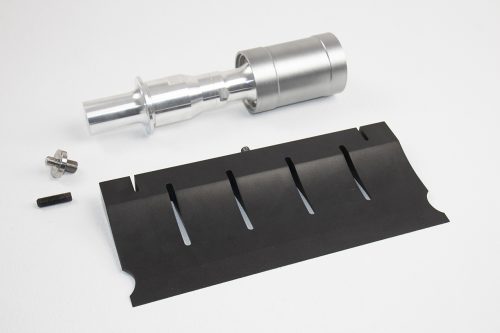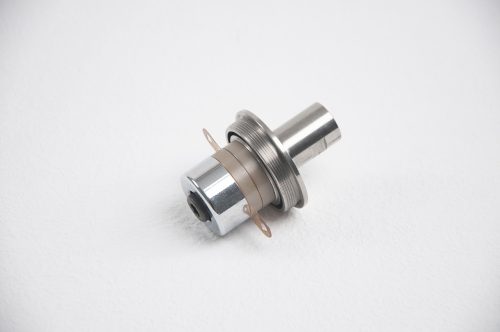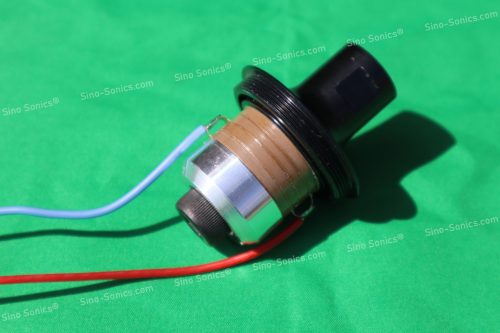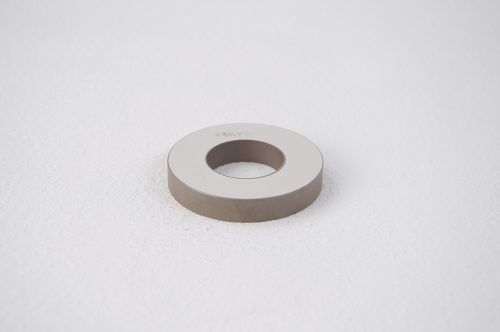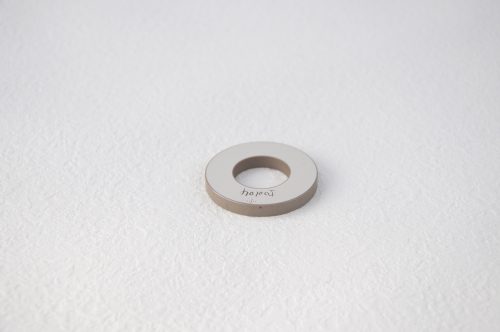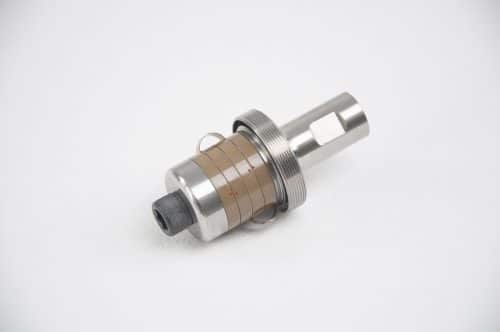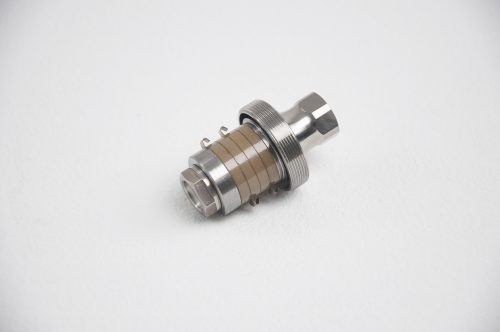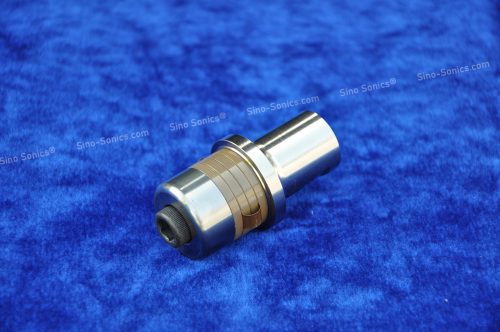Influence of Input Frequency
At low input frequencies, the relationships between a force applied to a piezoelectric ceramic element and the electric field or charge produced by the piezo element are:
E = -(g33T)
Q = -(d33F)
where E: electric field
g33: piezoelectric voltage constant
T: stress on ceramic element
Q: generated charge
d33: piezoelectric charge constant
F: applied force
The relationships between an applied voltage or electric field and the corresponding increase or decrease in a piezoelectric ceramic element’s thickness, length, or width are:
Δh = d33V
S = d33E
Δl / l = d31E
Δw / w = d31E
where l: initial length of ceramic element
w: initial width of ceramic element
Δh: change in height (thickness) of ceramic element
Δl: change in length of ceramic element
Δw: change in width of ceramic element
d: piezoelectric charge constant
V: applied voltage
S: strain (change in height / original height of element)
E: electric field
A piezoelectric ceramic element exposed to an alternating electric field changes dimensions cyclically, at the frequency of the field. The frequency at which the element vibrates most readily in response to the electrical input, and most efficiently converts the electrical energy input into mechanical energy — the resonance frequency — is determined by the composition of the ceramic material and by the shape and volume of the element.
As the frequency of cycling is increased, the element’s oscillations first approach a frequency at which impedance is minimum (maximum admittance). This frequency also is the resonance frequency. As the frequency is further increased, impedance increases to a maximum (minimum admittance), which also is the anti-resonance frequency. These frequencies are determined by experiment – to see how, refer to Determining Resonance Frequency.
The values for minimum impedance frequency and maximum impedance frequency can be used to calculate the electromechanical coupling factor, k, an indicator of the effectiveness with which a piezoelectric material converts electrical energy into mechanical energy or mechanical energy into electrical energy. k depends on the mode of vibration and the shape of the ceramic element. Dielectric losses and mechanical losses also affect the efficiency of energy conversion. Dielectric losses usually are more significant than mechanical losses.
Stability – Most properties of a piezoelectric ceramic element erode gradually, in a logarithmic relationship with time after polarization. Exact rates of aging depend on the composition of the ceramic element and the manufacturing process used to prepare it. Mishandling the element by exceeding its electrical, mechanical, or thermal limitations can accelerate this inherent process.
Electrical Limitations – Exposure to a strong electric field, of polarity opposite that of the polarizing field, will depolarize a piezoelectric material. The degree of depolarization depends on the grade of material, the exposure time, the temperature, and other factors, but fields of 200-500 V / mm or greater typically have a significant depolarizing effect. An alternating current will have a depolarizing effect during each half cycle in which polarity is opposite that of the polarizing field.
Mechanical Limitations Mechanical stress sufficient to disturb the orientation of the domains in a piezoelectric material can destroy the alignment of the dipoles. Like susceptibility to electrical depolarization, the ability to withstand mechanical stress differs among the various grades and brands of piezoelectric materials.
Thermal Limitations – If a piezoelectric ceramic material is heated to its Curie point, the domains will become disordered and the material will be depolarized. The recommended upper operating temperature for a ceramic usually is approximately half-way between °C and the Curie point. Within the recommended operating temperature range, temperature-associated changes in the orientation of the domains are reversible. On the other hand, these changes can create charge displacements and electric fields. Also, sudden temperature fluctuations can generate relatively high voltages, capable of depolarizing the ceramic element. A capacitor can be incorporated into the system to accept the superfluous electrical energy.
For a particular ceramic material, the pyroelectric charge constant – the change in polarity for a given change in temperature – and the pyroelectric field strength constant – the change in electric field for a given change in temperature – are indicators of the vulnerability of the material to pyroelectric effects. A high piezoelectric charge constant : pyroelectric charge constant ratio or piezoelectric voltage constant : pyroelectric field strength constant ratio indicates good resistance to pyroelectric effects.

